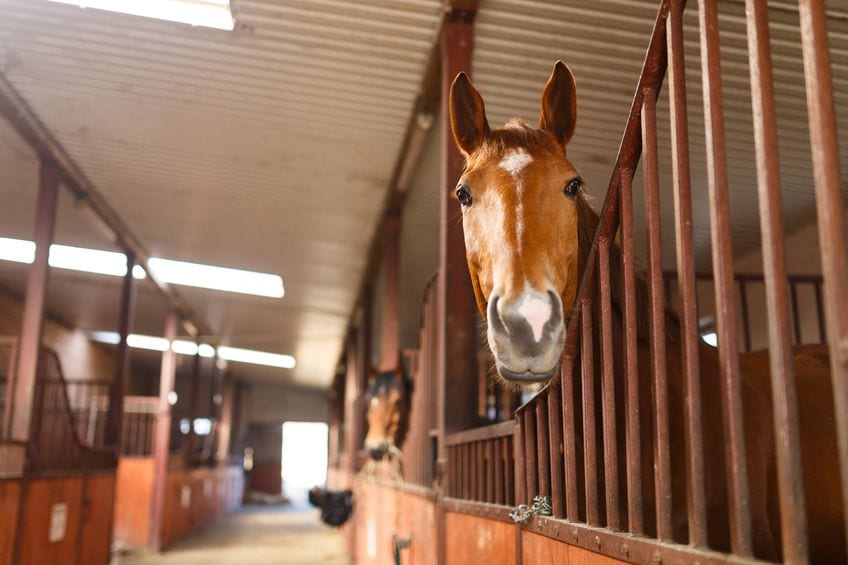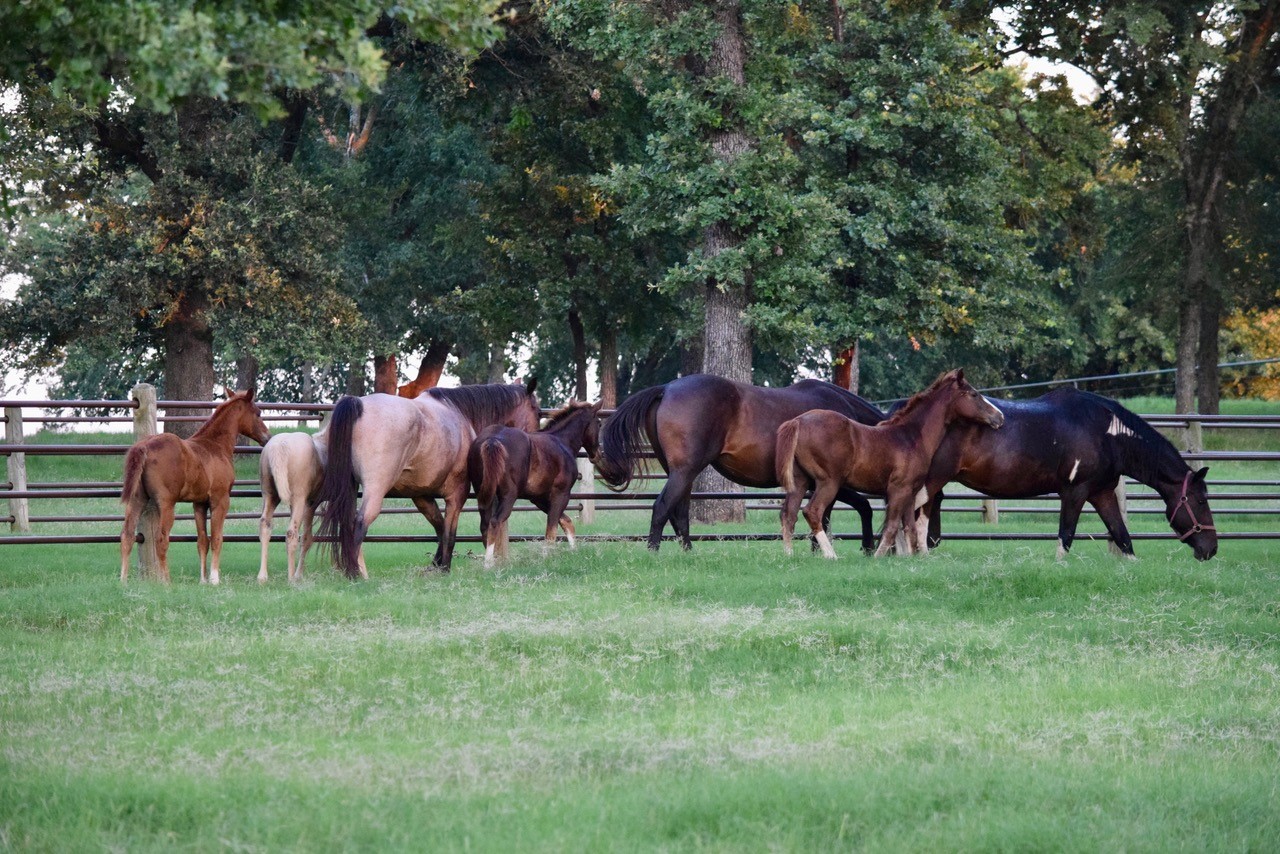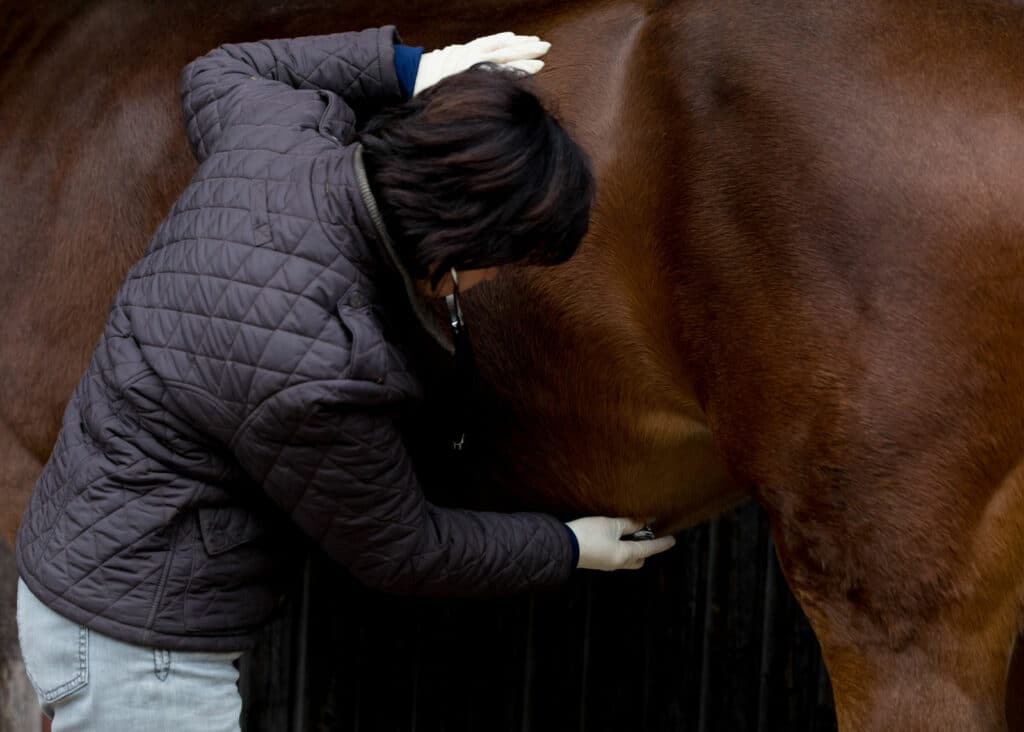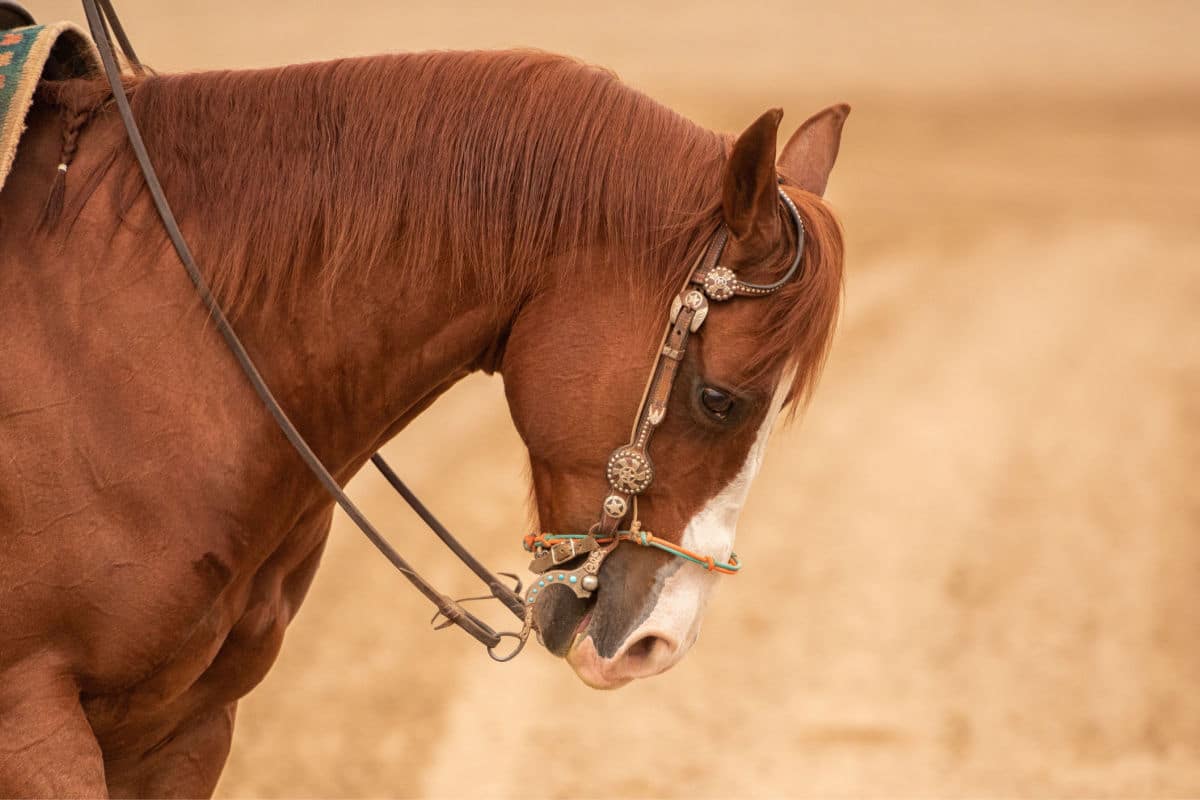If you’re a horse owner, there’s no other time you feel more loved by your equine than when you show up five minutes before feeding time. Poke your head through the barn door at this time and you’ll be treated to a chorus of whinnies and nickers, all seeming to say, “you’re my favorite person in the world!” Stick around for five minutes after dinnertime, though, and you’ll be pointedly ignored. Such is the power of scheduled eating.
The ability of horses to know precisely what time they’ll be fed may make it seem as though they should be fed at the same time every day. After all, our stomachs start growling at around 11:45 in preparation for lunchtime, so why wouldn’t horses’ do the same?
While it’s true that horses fed at regular times are conditioned to expect meals at certain times, it’s a myth that horses need to eat at the same time every day. Research suggests that there’s no physiological reason to stick to a strict feeding schedule. In fact, you really shouldn’t stick to any feeding schedule at all. Here’s what we mean.
Why You Shouldn’t Feed Your Horse at the Same Time
Conventional knowledge says that horses should be fed grain once or twice a day. From that, we’ve arbitrarily decided that horses should also be fed at the same time every day. You don’t have to travel far to hear that myth repeated, either; nearly all barns follow a fairly rigid feeding schedule, reinforcing the belief that horses should be kept on a strict schedule.
But when you think about it, it’s more likely that scheduled eating evolved from our own schedules. It’s much easier on us to plan our days around certain events. Dumping grain into our horses’ buckets twice a day at the same time is just as good an excuse as any.
But feeding at the same time each day doesn’t help your horse. In fact, you’re likely doing him more harm than good by sticking to this strict schedule. Horses are simply not designed to eat two big grain dumps per day — no matter how well timed. Feeding in this manner can cause a host of problems, including:
- High-starch grains moving through the digestive system too quickly and reaching the hindgut undigested.
- Extra starch disrupting the balance required for hindgut fermentation. This increases acidity, kills good bacteria and releases harmful toxins.
- Digestive imbalance caused by undigested feed in the hindgut can cause discomfort and can result in hindgut acidosis, which has been linked to laminitis, colonic ulceration and, potentially, colic.
For a Healthier Horse, Feed All the Time
While it’s a myth that you need to feed your horse at the same time every day, it’s quite clear that feeding a horse just twice a day can cause your horse significant distress. Instead, you should be feeding your horse all day.
Think about how horses behave in the wild: they graze slowly and constantly for up to about 18 hours per day. Grazing is generally an inefficient means of eating, so horses ingest just a little bit of nutrition at a time — but stretch it out over many hours. When eating in this fashion, horses don’t have to contend with the starch overload associated with two big dumps of grain, so their digestive system has time to fully process all feed and absorb nutrients like carbohydrates in the small intestine before they reach the hindgut. Additionally, this slow and steady process means that the stomach always has something in it, which helps buffer natural stomach acids that can otherwise cause irritation in the horse’s stomach.
Prioritize Forage — and Lots of it.
If your horse can’t spend all day grazing, do your best to prioritize forage and cut back on grain or pellets. Good-quality grass, hay and other roughage such as beet pulp can provide all of the essential nutrients a horse requires. If your horse is in heavy work or has a strenuous travel or competition schedule, you might consider supplementing his diet slightly with other feed. But even if you do add grain or pellets to his diet, plan to feed mostly roughage. And do it in a way that will help him derive the maximum benefit from it.
Make use of the host of tools at your disposal to make free-access forage possible for your horse. Use slow feeders such as the simple hay net in stalls, and even double nets up, to slow down munching and make flakes of hay last longer. Grazing muzzles can be helpful for easy-keepers to avoid overeating and associated problems without restricting turnout time. Other slow feeders, or simply putting a few large rocks in the feed tub, force horses to work a little harder for grain or beet pulp and spend longer over their meals.
Feeding your horse doesn’t have to be complicated. (And in this case, learning that you don’t have to feed your horse at the same time every day, might actually make your feeding schedule even easier.) Need more help? Check out the final post in our Nutrition for Horses series to help you design a feeding program for your horse. Or, simply look to nature. All-day grazing comes naturally to a horse. Eating two huge meals per day — no matter what time — simply isn’t.
Be sure to subscribe to the SUCCEED blog for more of our Monday Myths.




